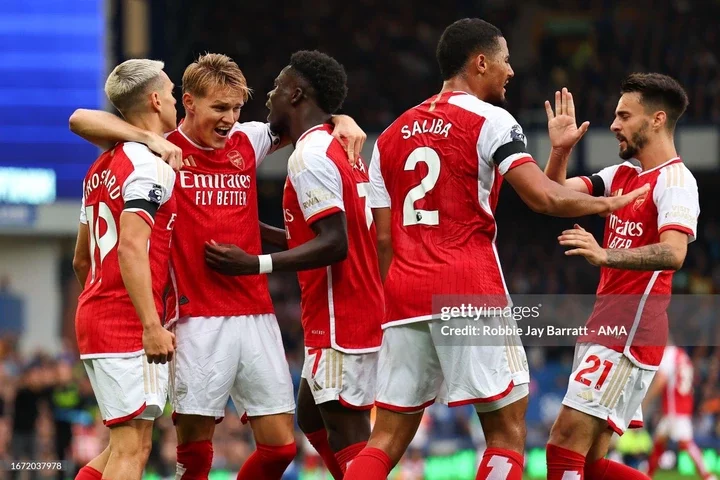Russia pushing for OPEC Like BRICS grain exchange

MOSCOW, RUSSIA — Russia is urging the BRICS, a trade alliance of nine emerging countries, to establish an inter-bloc grain exchange. The officially declared purpose of the alliance is to facilitate trade between member states, but analysts warn that the new structure will aim to become an analogue of the Organization of the Petroleum Exporting Countries (OPEC) for the global grain market, with the goal of influencing free pricing.
Thank you for reading this post, don’t forget to subscribe!
The Russian Union of Grain Exporters (RUGE) first expressed the idea of establishing an inter-BRICS grain exchange in December 2023, in a run-up to the bloc’s historic expansion. On Jan. 1, 2024, the alliance initially formed by Brazil, Russia, India, China and South Africa welcomed to its ranks Egypt, Ethiopia, Iran and the United Arab Emirates. Saudi Arabia has been invited to join the alliance and is considering becoming a member.
The proposal didn’t draw much attention until March, when it was backed by Russian President Vladimir Putin.
During a meeting with Russian farmers, Putin said: “All benchmark (grain) prices are set in the US and Europe, for example, in Paris. How much grain do the French produce? I think less than we do. And still, according to tradition, benchmark prices are formed out there.”
Putin called the existing pricing on the global grain market unfair, adding that the idea of establishing a BRICS grain exchange is good, and promising to work it through at the top government level.
RUGE expects the BRICS grain exchange to be technically ready by October 2024, Eduard Zernin, head of RUGE, recently told Reuters.
Zernin added that the word “exchange” is used only for reference, and Russia plans to establish a modern, high-tech digital marketplace.
RUGE claimed that during the initiative’s discussions at the national level, it was supported by the business communities of all BRICS countries.
Still, this statement perhaps should be taken with a grain of salt. While Russia finds selling grain through alternative potential sanction-proof channels lucrative, the rationale for participating in the project for other BRICS countries is less clear.
The grain exchange project would be unprecedented. Daria Snytko, vice president of Gazprombank’s analytical department, said that technically there are no international commodity exchanges on the global market, with a rare exception being the London Metal Exchange. She added that roughly 95% of grain is traded over the counter.
OPEC for the grain market
The idea of regulating prices for agricultural commodities looks attractive, but for this purpose BRICS needs to establish not just an exchange but a sectoral union like OPEC on the global oil market, said Yaroslav Lisovolik, head of BRICS+ Analytics, a Moscow-based think tank.
“Regulating prices simply by creating an exchange will not work since this requires uniting exporters into an organization similar to OPEC+ so that we can jointly limit supply on the market,” agreed Vladimir Chernov, an analyst at Freedom Finance Global.
OPEC is a group of oil-producing countries formed to regulate production performance and influence global oil market prices. Economists often describe OPEC as a textbook example of a cartel — an alliance established to hamper market competition.
In theory, BRICS members have sufficient capacity to become analogues of OPEC.
In December, the Russian Agricultural Ministry estimated that in 2023, BRICS members accounted for 1.17 million tonnes of grain production per year, 42% of the global volume. Combined consumption stood at 1.1 million tonnes, which is 40% of global consumption. Following the BRICS expansion, the figures reached 1.24 billion tonnes and 1.23 billion tonnes, respectively.
However, analysts noted that while OPEC is an organization of oil exporters, most BRICS countries are net grain importers. Only Russia and Brazil account for a substantial share of the global grain market and can potentially benefit from price regulation.
In Russia, the BRICS grain exchange is seen as a way to challenge the Western world order, just like the OPEC set up in the 1960s challenged the oligopoly of the Anglo-American oil firms.
Today, Russia accounts for a quarter of global grain exports, while the global prices are set by Western exchanges, such as the American CME Group and the French MATIF, and supplies are controlled by large European and American traders, such as Cargill and Viterra, said Leonid Khazanov, an independent Russia analyst.
“Accordingly, we have to take into account pricing and trade rules imposed by Western players,” Khazanov said. “The creation of its BRICS grain exchange will make it possible to rejiggle the global market in favor of the members of this organization and change the directions of logistics flows and their participants.”
Challenging the West
Lisovolik predicted grain could become only the first piece of a big puzzle directly connecting emerging countries.
“If the BRICS exchange attracts serious grain volumes, it could become a test bridge connecting the emerging BRICS trade and currency infrastructure,” Lisovolik said. “This will inevitably happen someday.”
The idea of establishing a BRICS exchange is in line with the recent trend of rapprochement among bloc members, especially Russia and China.
In October 2023, Food Export Trade, a Russian grain exporting firm, signed a $26 billion contract to supply China with 70 million tonnes of grain, legumes and oilseeds over the next 12 years.
Under this historical agreement, Russia plans to expand grain production in Siberia, the Urals, and the Far East, poorly populated parts of the country where agriculture is not developed as much as in European regions. The country will almost entirely sell the additional quantities to China.
The idea of selling grain to foreign customers for rubles has been brewing in the Russian government offices for some time. With the help of BRICS, it can become reality.
During a recent government meeting, Elvira Nabiullina, the head of the Russian central bank, revealed that the share of transactions between Russia and BRICS member countries conducted in national currencies has tripled, reaching 85%.
Nabiullina further explained that Moscow is actively engaged in discussions regarding the potential integration of national payment infrastructures with other BRICS members to further facilitate trade between member states.
The Russian government has encouraged other BRICS countries to explore avenues for transitioning away from the US dollar and alternative settlement schemes.
RUGE denies the idea that the new grain exchange will facilitate only Russian grain exports. Zernin said that although Western sanctions continue to weigh on the demand for Russian grain, the global market remains strong.
However, the BRICS grain exchange could help keep Russian grain exports running when international restrictions against the country continue to pile up.
The EU is set to impose a tariff of up to 50% on Russian grain imports in a bid to limit the Russian economy’s incomes and protect the European market, European Commission president Ursula von der Leyen recently announced.
Zernin said Russia will be fine with the planned introduction by the European Union of duties on grain from Russia and Belarus. Speaking to the Russian press, Zernin noted that an import ban of Russian agricultural products could hurt European processors, especially in the markets of Italy and Spain. He also added that the EU is more of a competitor than a target market for Russian crop exports, and supply volumes were insignificant.
Many hurdles to clear
Establishing an alternative system for grain trade will take political will, time and substantial efforts.
Lisovolik listed ensuring the level of liquidity of exchange trading and attracting participants to trading, including from the private sector, as several of the challenges in creating and regulating the BRICS grain exchange.
“And, of course, it will be necessary to ensure a certain level of competitiveness — the existing exchanges have been trusted for a long time; they have developed their own infrastructure, and so far, they have the advantage,” he said.
Freedom Finance’s Chernov said that he does not expect the new grain exchange to be formed soon since there are numerous obstacles yet to be overcome.
“The creation of such an exchange in the current geopolitical conditions is most necessary for Russia, which accounts for 22% of global grain exports and is at risk due to external restrictions,” Chernov said.
Russian analysts believe the relations between China and Western countries largely will determine the future of projects like the BRICS grain exchange.
Ekaterina Novikova, associate professor of the Department of Economic Theory of the Russian Economic University, for instance, said that the world economy gradually is being divided into two regions. The key players are China and the United States, which have major trading partners around them. She believes the United States will not be able to influence the global grain market as before.
Looming trade tensions between Western countries and China could push the latter to more actively explore opportunities to deepen ties with other emerging economies. The outcome of the 2024 US presidential elections will play an important role, as the Republican candidate, former president Donald Trump, seeks to escalate the trade conflict by imposing 50% duties on Chinese imports.





